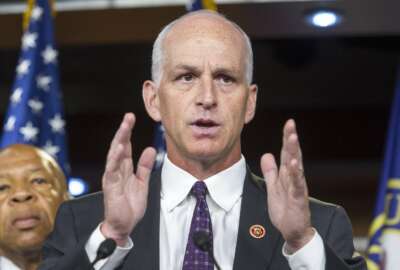
Congress holds up 2018 audit as reason to rein in defense spending
Critics of the $750 billion Defense budget request ask why taxpayers should trust the Defense Department with money, as a result of the 2018 audit.
With the Defense Department’s first audit in hand, lawmakers are scrutinizing the Pentagon’s request for $750 billion in 2020 with a new vigor and questioning what “future risk” really means for the nation.
Congress asked the Pentagon to deliver a budget in 2020 that creates an “acceptable level of risk” for the military in 2025. However, after DoD showed it could not account for most of the money it’s been spending over the years in it’s 2018 audit, Congress is questioning if the military truly needs such enormous budgets.
What critics of larger defense budgets are floating as a topline isn’t far off from the Pentagon’s request, — $733 billion — but those critics have new ammunition in the form of the audit to counter the military’s claim that it needs a higher $750 billion topline.
That ammunition was on full display during the April 2 House Armed Services Committee budget hearing with leaders.
“The issue is not knowing where this $750 billion is going to go,” said Committee Chairman Adam Smith (D-Wash.). “It’s impossible to overstate this point. We literally don’t know where a chunk of that $750 billion is going to go. We can identify some of it here and there, but by any normal accounting measure, you can’t tell us where you’re spending your money, or how much inventory you have.”
Only five of DoD’s 21 auditable agencies came back clean from the 2018 audit, and those clean agencies were smaller entities.
Related Stories
While military leaders could only tell lawmakers that they were working to be more accountable on funds, they did have answers for what might happen if the military wasn’t fully funded to the $750 billion topline given the way DoD currently spends money.
Air Force Chief of Staff Gen. David Goldfein said the Air Force would suffer in its training ranges.
“What would be at risk is out ability to replicate the threat with the proper environment, both virtually and physically on our ranges going forward,” Goldfein said. “What’s also at risk is this significant movement that we started last year, and Congress supported this. It was a significant move for the Air Force to shift from a platform solution on command and control and battle management to a network solution going forward. That is our future in the business of joint warfighting, to ensure that we are taking every sensor and every shooter and connecting them together.”
Army Chief of Staff Gen. Mark Milley said the Army would have to trim back some of its manning and “not fill holes” it has been filling. The Army would also lighten some of its major training exercises.
“Right now, for example, we’re doing our first emergency deployment readiness exercise, deploying an armored brigade combat team out to Fort Bliss, Texas, all the way to Europe,” Milley said. “That’s the first time that’s been done in 25, 30, maybe even 40 years. Exercises like that would come down.”
He added that the Army would slow down the delivery and procurement of spare parts.
What is risk?
Smith challenged the military’s definition of risk, however, questioning if an “acceptable level of risk” is ever attainable no matter how much money Congress appropriates DoD.
“My point is, this has no end,” Smith said. “You cannot eliminate risk… We could spend $1 trillion and I’m halfway convinced that you’d all be sitting there telling us, ‘OK, that’s great, but here’s all the things we can’t do.”
Smith said he wants a long-term understanding of what risk entails.
“We could throw money at you all day long and you’re going to come back at us and say there’s still an unacceptable level of risk,” he said. “I don’t find that helpful.”
In the meantime, it seems like Congress will be battling over about $17 billion — the difference between a $733 billion and a $750 billion topline.
“The House Budget Committee, the number that they’ve talked about for defense is $733 billion,” Smith said earlier this month. “It’s a not insubstantial number. If you take out the roughly $10 billion in emergency spending that’s folded in, you’re not that far apart on the budget numbers. I don’t see that being a problem, but we will have to find savings in some places, obviously.”
The $9.2 billion DoD requested for emergency spending would be used mostly to build the wall along the southern border and refill military construction accounts it plans to use for wall construction in 2019 under the president’s emergency declaration.
Part of that money would also go into rebuilding Tyndall and Offutt Air Force Bases after they were impacted by extreme weather.
Another issue Congress needs to hammer out is exactly how DoD’s budget is allocated. Currently, the budget funds right up to the $545 billion budget caps and then makes up the rest of the budget with emergency war accounts that are not subject to the Budget Control Act.
Critics say putting base budget funding in emergency accounts shrouds accountability and makes it harder for DoD to plan for the future.
Copyright © 2024 Federal News Network. All rights reserved. This website is not intended for users located within the European Economic Area.
Scott Maucione is a defense reporter for Federal News Network and reports on human capital, workforce and the Defense Department at-large.
Follow @smaucioneWFED






